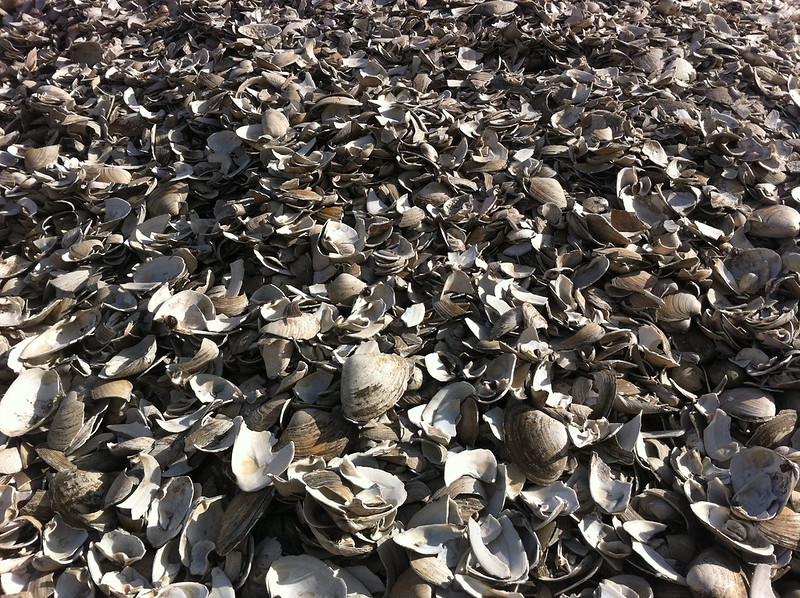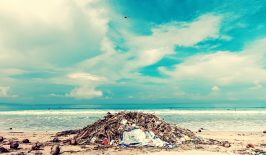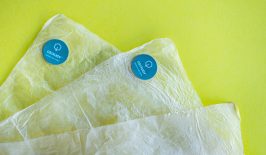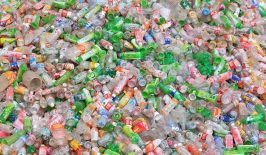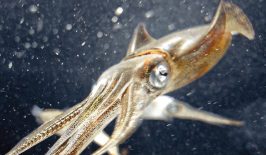As the world’s population becomes increasingly aware of the magnitude of the growing plastic waste crisis, more and more is being done at the state level to attempt to improve the situation. Several countries, including sixteen in Africa, currently operate wholesale plastic bag bans, while the EU is set to ban one-use plastics starting in 2021. And in many other countries across the world, systems have been put in place to either encourage consumers to avoid one-use plastics or incentivise them to look for alternatives.
The problem, however, is that for many consumers, cheap single-use plastics still fulfill an important and convenient everyday role. In some countries where they have been banned, such as in South Africa and Kenya, an illegal black market has sprung up to still offer plastic to smaller stores and businesses. A long term solution to the plastic problem might therefore be in providing adequate and practical alternatives to roles previously occupied by plastic, such as in food packaging and carrier bags.
In recent years, there has been a significant growth in research and development of such alternatives, with sources as diverse as corn starch, algae and milk proteins all being suggested as biodegradable plastic-like alternatives. Now, an Australian startup is adding a new material to the mix: seafood shell waste.
Carapac is a New South Wales based venture that has developed a method of turning crustacean shells into a thin plastic-like film that can replace polyethylene and polypropylene products. After originally developing the concept as part of the University of Sydney’s interdisciplinary Inventing the Future programme, a trio of post doctorate students – Michelle Demers, Jared Wood and Kimberly Bolton – founded Carapac to take the idea even further.
They have been able to take waste shellfish shells, such as from prawns and shrimps, and refine it into chitosan, a kind of polycarbohydrate that can have a wide range of applications. Although the exact process has not been fully disclosed, producing chitosan usually requires mixing the hard outer shells (carapaces) of crustaceans with an alkaline based solution, usually sodium hydroxide, which then produces a thin film-like structure. Similar processes are used to produce other plastic alternatives, such as starch-based plastics, but this is the first time shellfish shells are being used to produce a commercially-available plastic alternative.
A Truly Biodegradable Plastic?
According to Carapac, their version also comes with some additional advantages over both traditional plastics and even some other biodegradable ones. For one thing, their chitin-based plastics are biodegradable in a much broader sense. Carapac packaging will simply naturally biograde over time in most normal composting or landfill environments, with the plastic completely breaking down within around 90 days, meaning you could even turn it into compost at home.
And if for some reason the plastic does make it into the ocean, it will simply breakdown and can be ingested by marine life without issue. Furthermore, if buried in the garden, for example, the Carapac plastic also releases nitrogen-based fertilisers which can help plants grow. In fact, shrimp shells have long been a favourite of gardeners and composters for their ability to promote certain bacterias and fend off pests.
Other biodegradable plastics, such as corn starch based polylactic acid (PLA), are only truly biodegradable under certain specific circumstances. PLA, for example, only rapidly breaks down under industrial composting conditions, in which it is consistently heated and fed with certain enzymes. If simply placed in a landfill, a PLA bottle could take much longer to breakdown – as long as 100 to 1,000 years according to some analysts.
Furthermore, PLA bottles need to be separated from normal plastics and exist within a separate recycling chain. Often however, they are simply discarded within normal plastic recycling.
Another disadvantage is that corn starch can be used for a variety of useful functions and not simply as a plastic alternative. Relying on corn starch would therefore likely result in increased production of corn and additional demands on agriculture and the environment. Meanwhile, Carapac’s source is already readily available as a waste product, with around 8.1 million tonnes of shellfish waste being produced annually in the Asia Pacific alone. For their production, Carapac have contracted with an Indonesian food processing plant which already de-shells shrimps as part of their production cycle, although they are looking for an Australian alternative to shorten supply lines even further.
Currently, Carapac has used their chitosan plastic alternatives to create a semi-rigid material that can be turned into pouches or bags. Additionally, they are also working on a thin, cling film like product and an adhesive. Carapac also claim their plastic alternative is not only safer for the environment, but also keeps produce such as fruit and vegetables fresher for longer.
For the time being, Carapac are still in the funding and prototype stage and are working in consultation with farmers, producers and industry experts. Although their products are not currently on the market, they hope to partner with an Austrialian enterprise that can help scale the project and ultimately license its bio-plastic to other producers, as well as create their own packaging.
